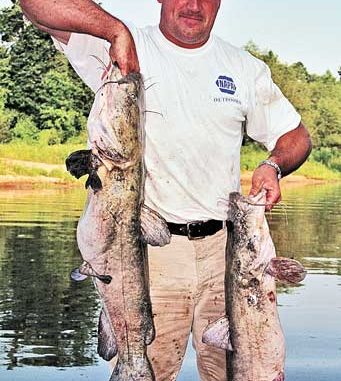
June is a busy fishing month on the Santee Cooper lakes, Marion and Moultrie, and there’s excellent fishing for numerous species. Fish are settling into summertime patterns, and that often makes fishing more reliable. Plus, nocturnal fishing becomes a good option for many species.
But don’t keep any stripers you catch for a while. About a year ago, Gov. Mark Sanford signed new striped bass regulations into effect for the Santee Cooper system.
One has a crucial impact on June striper fishing season: a harvest restriction for the entire Santee Cooper system (lakes and river) from June 1 through Sept. 30. You cannot possess any striped bass of any size; the fishery is catch-and-release only. The daily creel limit for the rest of the year was also reduced from five to three, and the minimum size limit was raised from 21 inches to 26 inches. But the point is not to keep any stripers during the restricted time.
While anglers who target stripes won’t overlook this, there are many fishermen who don’t normally fish for stripers but occasionally catch them. This frequently happens with bass, crappie or catfish anglers.
But Capt. Alan Spence of Spence’s Guide Service (803-478-5029), said since his clients can’t keep stripers, June is a big month for catfishing.
“Both Marion and Moultrie produce well, but I typically fish Lake Marion in June for catfish,” he said. “My general pattern is to fish a few hours in the afternoon and on until about midnight. That way, we get the best of the afternoon fishing and the after-dark fishing.”
Spence said that both blues and flatheads are primary targets during June, and a number of fish in the 30-pound plus range are caught.
“Generally, I’ll drift-fish in the afternoons, and I work points and areas that are getting the wind,” Spence said. “That seems to push the forage onto these areas, and the catfish bite is good. Also, the afternoon breeze helps the boat drift and keeps the bugs and heat issues minimized.
“While drifting, if I see some big fish marked on the graph, I’ll certainly return at dark to anchor and set up on those fish,” he said. “I’ll typically put out eight to 10 rods and fan cast them around the boat when anchored.”
Spence said he’ll vary the baits he uses: live bream, live perch, shad and cut bait from all of those species. Most of his rigs are flat-lined from the anchored boat when fishing at night, but he will usually have one or two tight-line rigs straight under the boat.
Spence said he usually quits fishing around midnight.
“I’ve found that from about midnight until four in the morning, the action usually slows,” he said. “This fishing pattern produces a lot of fish in the 5- to 10-pound class — and larger ones as well. Usually, we’ll hook into a fish in the 30-pound-or-larger class on a typical trip. On the really good nights, we may get four or five big fish.”
There’s an excellent chance the state record for flatheads will be broken at Santee Cooper this year, according to Spence, who is very high on the flathead population.
“I’m sure there are 80-pound-and-larger flathead catfish out there,” he said. “The problem is, those giant flatheads live in the trees (and) around the logs, and it’s difficult to get those huge fish in the boat. But I think it’s going to eventually happen.”
Gator Getting Time
It’s time to apply for permits for the 2009 alligator hunting season. Application deadlines are earlier this year than in 2008; they’re due by June 15. For application purposes, all of Lake Marion is grouped into Unit 3.
The largest alligator taken in South Carolina last year was from Lake Marion; it measured a whopping 13 feet, seven inches. Several other huge alligators came from the Santee Cooper lakes and surrounding areas. The 2009 alligator season is Sept. 12-Oct. 10 if you’re drawn for a permit. Check the S.C. Department of Natural Resources website (www.dnr.sc.gov) for application details.
Broken Lines and Tangled Dipnets
It’s no secret to anyone that the striper fishery on the Santee Cooper lakes needs some help. Based on conversations with fisheries biologists as well as fishermen, it’s likely a number of things are creating issues. But whether you are pro or con for the period of time when possession of stripers is restricted, if it’s based on good biology, I figure it’s worth trying. The stated purpose is to combat the population decline of the striped bass. Many of us have enjoyed the fishery in its heyday, and if this helps bring that back, it’s a good plan.





Be the first to comment